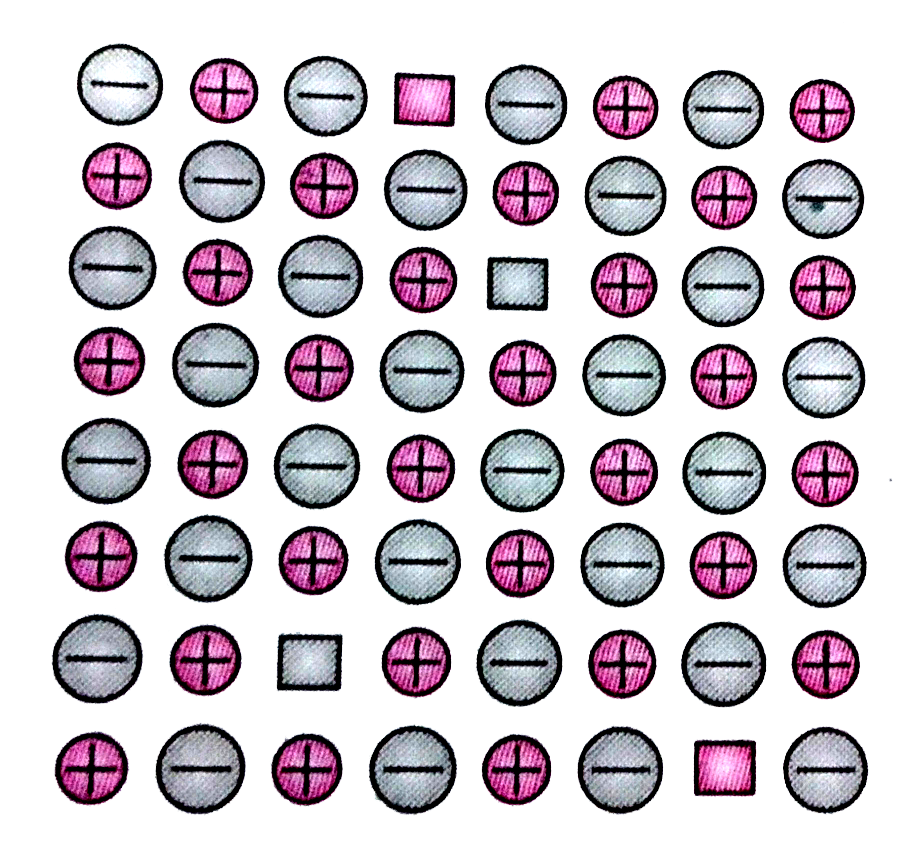Which of the following defects decrease the density ?
Interstitial defect
Vacancy defect
Frankel defect
Schottky defect.
The correct Answer is:B, D
To solve the question "Which of the following defects decrease the density?", we need to understand the types of defects in solids and their impact on density.
1. Identify Types of Defects:
- There are several types of defects in solids, including vacancies, interstitials, and substitutional defects.
- Vacancies: These are missing atoms in the lattice structure.
- Interstitials: These are extra atoms that occupy spaces between the regular lattice points.
- Substitutional Defects: These occur when an atom in the lattice is replaced by a different type of atom.
2. Analyze the Effect on Density:
- Vacancies: The presence of vacancies decreases the number of atoms in a given volume, which leads to a decrease in density.
- Interstitials: The introduction of interstitial atoms increases the number of atoms in the lattice, leading to an increase in density.
- Substitutional Defects: The effect on density depends on the size and mass of the substituting atom compared to the original atom. If the substituting atom is smaller or lighter, it may decrease the density, while a larger or heavier atom may increase it.
3. Conclusion:
- Among these defects, vacancies are the primary type that consistently decreases the density of a solid.
Final Answer:
The defect that decreases the density is vacancies.
- There are several types of defects in solids, including vacancies, interstitials, and substitutional defects.
- Vacancies: These are missing atoms in the lattice structure.
- Interstitials: These are extra atoms that occupy spaces between the regular lattice points.
- Substitutional Defects: These occur when an atom in the lattice is replaced by a different type of atom.
- Vacancies: The presence of vacancies decreases the number of atoms in a given volume, which leads to a decrease in density.
- Interstitials: The introduction of interstitial atoms increases the number of atoms in the lattice, leading to an increase in density.
- Substitutional Defects: The effect on density depends on the size and mass of the substituting atom compared to the original atom. If the substituting atom is smaller or lighter, it may decrease the density, while a larger or heavier atom may increase it.
- Among these defects, vacancies are the primary type that consistently decreases the density of a solid.
The defect that decreases the density is vacancies.
Similar Questions
Knowledge Check
Which of the following would necessarily decrease the density of a population in a given habitat ?
ANatality and mortalityBImmigration and emigrationCMortality and emigrationDNatality and immigration
Which of the following defects does KBr show?
View SolutionWhich of the following defects is represented in the given figure ?

View SolutionWhich of the following decreases the heart beat?
View SolutionWhich of the following defects, if present, lowers the density of the crystal ?
View SolutionWhich of the following would necessarily decrease the density of a population in a given habitat ?
View SolutionWhich of the following defects doesn't disturb stoichiometry of solid ?
View Solution(i) Write the type of magnetism observed when the magnetism observed when the magnetic moments are aligned in parallel and anti parallel direction in unequal number . ltbnrgt (ii) Which stoichiometric defect decreases the density of the crytal?
View Solution
